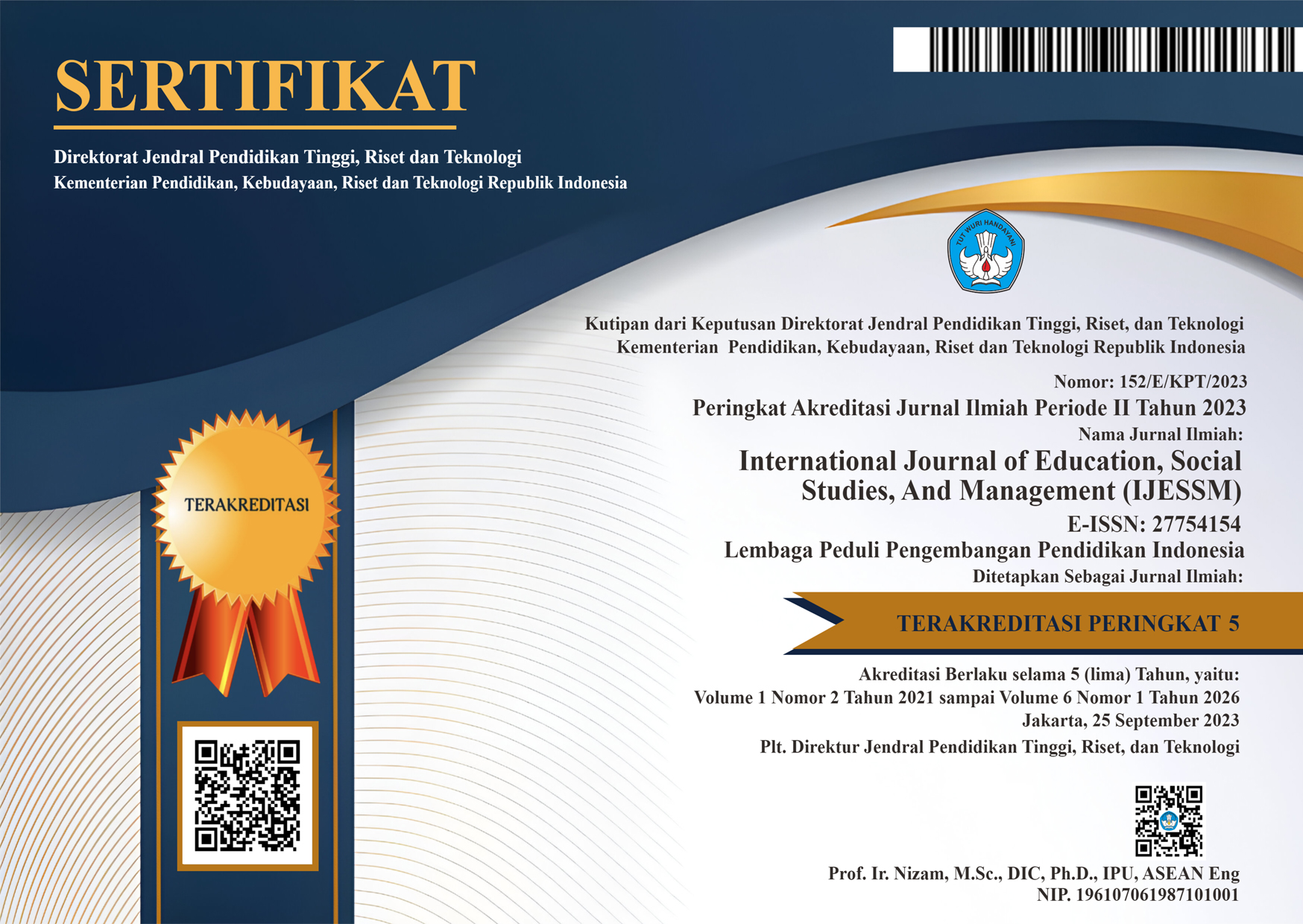The Impact Of Profitability, Asset Structure, and Firm Size On Debt Policy On Property and Real Estate Companies Listed On The Indonesia Stock Exchange (IDX) For The 2015 – 2020 Period
DOI:
https://doi.org/10.52121/ijessm.v3i1.132Keywords:
Profitability, Asset Structure, Firm Size, Debt PolicyAbstract
This study aims to empirically examine the effect of profitability, asset structure, and firm size on debt policy in property and real estate companies listed on the Indonesia Stock Exchange (IDX) for the 2015 – 2020 period. The independent variables used in this study consist of profitability using return on assets (ROA), asset structure are proxied by the value ot total assets divided by fixed assets, and and company size is proxied by the value of Ln of total assets. The dependent variable used is debt policy. The data used as samples in this study are financial reports and annual reports of property and real estate companies listed on the Indonesia Stock Exchange for the period 2015–2020. The sampling method used in this study is a purposive sampling technique with 39 companies that meet the criteria used as samples. study. This research uses panel data regression analysis model. The model used in this study is the random effect model (REM). The results of this study indicate that profitability has a negative and significant effect on debt policy. Asset structure has a positive and insignificant effect on debt policy. Meanwhile, firm size has a positive and significant effect on debt policy.
Downloads
Published
How to Cite
Issue
Section
License
Copyright (c) 2023 International Journal Of Education, Social Studies, And Management (IJESSM)

This work is licensed under a Creative Commons Attribution 4.0 International License.

















